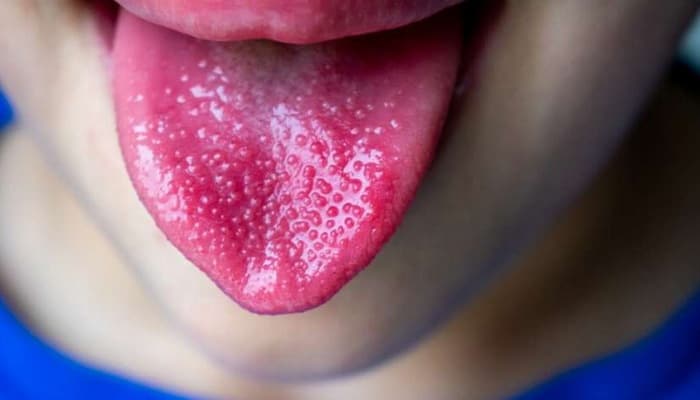Зміст
- 1 Scarlet fever – what is this disease?
- 2 Scarlet fever in children
- 3 Scarlet fever in adults. Is it possible to get infected?
- 4 Scarlet fever during pregnancy
- 5 Infection with scarlet fever. How can this be prevented?
- 6 How is scarlet fever?
- 7 Scarlet fever – symptoms of the disease
- 8 The characteristic symptom of scarlet fever is a rash.
- 9 What can scarlet fever be confused with? Diagnostics and recognition
- 10 How is scarlet fever treated?
Scarlet fever is an acute infectious disease that primarily affects children, although it can also affect adults. It is worth knowing how it differs in its course in different age groups, as well as how to treat it.
Scarlet fever is an infectious disease that can occur in children and adults. Infection usually occurs by airborne droplets or by direct contact with an infected person. The characteristic symptoms of the disease include high fever, skin rash, sore throat, the so-called “raspberry tongue” and peeling of the epidermis.
Scarlet fever – what is this disease?
Scarlet fever is a disease caused by infection with group A streptococci (pyogenic streptococci, hemolytic). Other diseases caused by these bacteria include: tonsillitis, rosea and impetigo. Infection occurs by airborne droplets or by direct contact with objects used by the patient. The incubation period for scarlet fever is 1 to 5 days. Scarlet fever is characterized by fever and rashes on the skin and mucous membranes.
Scarlet fever in children

Scarlet fever can occur at any age, although its symptoms are most often observed in children of preschool and school age, therefore it is called a disease of childhood. This is due to the constant presence of children in clusters and the lack of hygiene rules (shared toys, towels).
Today, scarlet fever, with proper treatment, is not as dangerous for children as it used to be. However, it should not be underestimated, and treatment should always be carried out under medical supervision.
Scarlet fever in adults. Is it possible to get infected?
Although scarlet fever is considered a disease that mainly affects children, adults can also become infected with it. Scarlet fever in adults is usually more severe than in children. Most typically there is an acute onset of symptoms, which, however, rarely leads to complications. The most common symptoms of scarlet fever in adults are fever, sore throat, and skin rash. In rare cases, with an extremely severe course of the disease, liver damage, myocarditis, or kidney damage may occur. Sometimes a complication of untreated scarlet fever can be peritonsillar abscess, otitis media, or sinusitis.
Scarlet fever during pregnancy
Pregnant women suffering from scarlet fever should be under constant medical supervision. Scarlet fever does not pose a direct threat to the pregnant woman and the child. Here, the same treatment is used as in other people, i.e., antibiotic therapy and drugs that alleviate the symptoms of the disease.
Infection with scarlet fever. How can this be prevented?
Scarlet fever is most common during the winter months. You can become infected by airborne droplets or by direct contact with an infected person. Can illness be avoided? A huge role here, among other things, is played by regular care of the immune system. Maintaining a healthy lifestyle and a balanced diet. They can also be useful supplements and vitamins for immunity. This infection is often attributed to children also because they have not yet fully developed immunity.
The incubation period for symptoms is 1–5 days after infection. With scarlet fever, the use of an antibiotic reduces the period of infection to 24 hours from the moment of the first dose. Without treatment, or with the wrong treatment, people can be contagious to the environment for up to several weeks.
Infection can also occur through the digestive tract, although this is now a rare cause. The source here can be, for example, contaminated and raw milk.
It is estimated that about 20% of the population are carriers of Streptococcus pyogenes on the tonsils – most typically these are people aged 5–15 years. Carriers do not show symptoms of the disease, but they can infect others.
How is scarlet fever?
The incubation period of scarlet fever is short and depends on the intensity of the infection and the way the bacteria enter the body. Usually, the first symptoms appear 2–5 days after infection. Initially, there is a sudden increase in body temperature up to 40 °C, weakness, abdominal pain, fatigue and severe sore throat. On the second day of symptoms, a rash most typically appears, which is characterized by small pitting of the skin (compared to brush marks). Typically, on the 4-5th day of the disease, a bright pink tongue with visible papillae (resembling strawberries or raspberries) is observed. After about 7 days, peeling of the skin of the face is observed, after 14 days – the skin of the trunk and after about 3 weeks – peeling of the skin of the hands and feet.
Scarlet fever – symptoms of the disease
The symptoms of scarlet fever in adults are often similar to those that occur in children.
- Fever – with scarlet fever, an acute onset is characteristic, body temperature rises rapidly to 40 °C,
- skin rash – usually appears on the second day of illness and looks like small spots on the skin, resembling brush marks; skin rash occurs throughout the body, except for the so-called Dilator triangle, that is, the area between the nose and chin; skin rash is best seen on the face, buttocks, as well as in the armpits and groin;
- vomiting, diarrhea, abdominal pain – more common in children than in adults;
- “Raspberry tongue” – a bright red or pink tongue with visible papillae, which together create an image resembling raspberries or strawberries; initially there may be a white coating on the tongue, which gradually disappears;
- changes in the mucous membranes of the oral cavity – bright red or hemorrhagic spots on the soft palate and pharyngeal arches; sometimes changes can merge; with scarlet fever with tonsillitis, swollen and reddened tonsils are initially observed, followed by the appearance of whitish plaques on their surface, and inflammation of the lymph nodes may additionally occur;
- peeling of the epidermis – after 7 days from the onset of the disease, the skin on the face begins to peel off, after 2 weeks – on the trunk, after 3 weeks – small-scale peeling of the epidermis of the arms and legs. Observable; however, the symptom of peeling does not occur in every person with scarlet fever.
The characteristic symptom of scarlet fever is a rash.
The most characteristic symptom is a small popular or macular rash appearing on the second day from the onset of symptoms. Initially, changes are observed on the trunk, then the development of a rash begins on the skin centrifugally towards the distal parts of the body (legs, arms). It is not found on the skin of elephants and legs. The rash of change is compared to the size of a pinhead. The greatest intensity of rashes is observed in the armpits, articular folds, buttocks and on the inner surface of the thighs and arms. The rash disappears with pressure. Erythema appears on the face, bypassing the so-called Filatov’s Triangle, that is, the space between the nose and chin. Red lines are observed in the area of the articular folds – the so-called pastia lines.
What can scarlet fever be confused with? Diagnostics and recognition
If you suspect scarlet fever, see your doctor immediately. Scarlet fever is diagnosed on the basis of typical clinical signs and a throat swab confirming infection. In people with pharyngitis, it may be helpful to use the MacIsaki/Zentor score, which assesses the likelihood of infection based on age, presence of fever, anterior cervical lymph node enlargement, adenoid plaque, and absence of cough.
It happens that the symptoms of scarlet fever are confused with other diseases. Most often it is:
- measles,
- rubella,
- toxic shock syndrome,
- staphylococcal infection.
How is scarlet fever treated?
This involves the use of an antibiotic (phenoxymethylpenicillin), after which the patient ceases to be contagious within 24 hours. Strictly follow the doctor’s instructions regarding the use of the prescribed drug and do not shorten the period of its use, as this may lead to the development of streptococcal carriage.
Phenoxymethylpenicillin is used 2 times a day for 10 days. Additionally, painkillers, anti-inflammatory and lowering the temperature are used. Remember to stay hydrated to prevent dehydration. Treatment is usually carried out at home, however, in case of a severe course, especially in children, and the occurrence of complications, the patient is referred to a hospital.
It is impossible to cure scarlet fever with home remedies, and this can lead to dangerous complications.
Complications after scarlet fever
Scarlet fever typically does not cause dangerous complications, although inflammation of the middle ear, myocardium, liver, or joints is sometimes observed in the more severe course of the disease. In most cases, the symptoms gradually subside over several days, and the peeling of the epidermis lasts the longest. Complications of scarlet fever after improper treatment (or lack thereof), such as rheumatism, are extremely rare.
It can also be a reaction to viral or bacterial infections. Glomerulonephritis, which is the result of the body’s struggle with streptococci (with scarlet fever) or, for example, pneumococci and staphylococci (with other infections). The disease is usually asymptomatic and resolves spontaneously.
Interestingly, you can get sick with scarlet fever many times, but no more than three times, since there are three types of bacterial toxin.








